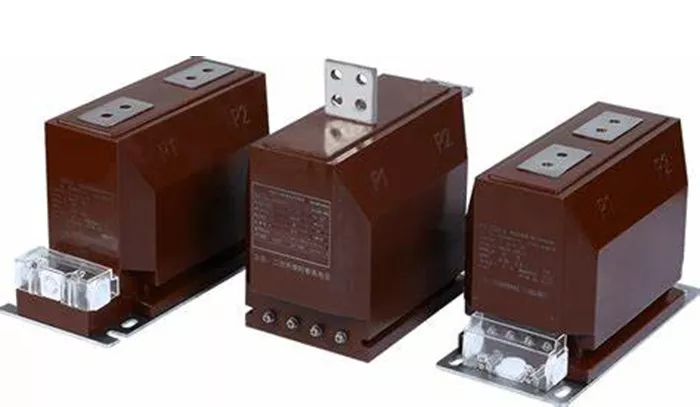Current transformers (CTs) are essential devices in electrical systems, used for measuring current and providing electrical isolation between the primary and secondary circuits. They play a crucial role in metering, protection, and control systems. Understanding the various parameters and specifications of current transformers is vital for their proper selection and application. One such important parameter is the Instrument Security Factor (FS), which is particularly relevant for measurement-class current transformers.
Understanding the Instrument Security Factor (FS)
Definition of FS
The Instrument Security Factor (FS) is defined as the ratio of the rated instrument limit primary current to the rated primary current. This parameter is crucial for protecting secondary instruments connected to the current transformer during fault conditions. When a fault occurs in the electrical system, the primary current of the CT can increase significantly. The FS indicates the point at which the CT will saturate and limit the secondary current, thereby protecting the secondary instruments from damage due to excessive current flow.
Importance of FS
The primary purpose of the FS is to ensure the safety of secondary instruments such as ammeters, energy meters, and protection relays. These instruments have specific overload capacities, and exceeding these capacities can lead to instrument failure. For example, if a measuring instrument rated for 5 A has an overload capacity of 50 A for a short period, it is essential that the CT limits the secondary current to within this range during a fault. The smaller the FS value, the more effective the CT is at protecting the secondary instruments.
Calculation of FS
The FS is calculated using the following formula:
FS= Rated Instrument Limit Primary Current/Rated Primary Current
The rated instrument limit primary current is the minimum primary current at which the CT’s composite error exceeds 10% under the rated load. This value is determined based on the specific requirements of the secondary instruments connected to the CT.
Recommended Values of FS
The recommended values for FS are typically 5 or 10. The choice of FS value depends on the overload capacity of the secondary instruments. For instruments with higher accuracy and lower overload capacity, a smaller FS value is preferred to provide better protection. Conversely, for instruments with higher overload capacity, a larger FS value may be acceptable.
Technical Parameters of Current Transformers
Rated Primary Current
The rated primary current is the optimal current value at which the CT operates with minimal errors and losses. This value is crucial for ensuring the accuracy and efficiency of the CT under normal operating conditions.
Rated Secondary Current
The rated secondary current is the value of the secondary current at which the CT achieves its best performance. Typically, this value is standardized at 5 A or 1 A for most measurement applications.
Rated Burden
The rated burden of a current transformer is the total load connected to its secondary circuit, expressed in VA or ohms. This parameter affects the accuracy and performance of the CT and must be considered during its selection and application.
Accuracy Class
The accuracy class of a current transformer defines the maximum permissible percentage error at the rated current. Common accuracy classes for measurement purposes include 0.1, 0.2, and 0.5. The accuracy class is essential for ensuring precise measurements and reliable operation of the electrical system.
Knee Point Voltage
The knee point voltage is the voltage at which the CT core saturates. This parameter is particularly important for protection CTs, as it indicates the point at which the CT’s performance may degrade under fault conditions.
Working Principle of Current Transformers
The working principle of a current transformer is based on electromagnetic induction. When an alternating current flows through the primary winding, it generates a varying magnetic field. This magnetic field induces an electromotive force (EMF) in the secondary winding according to Faraday’s law of electromagnetic induction. The induced EMF in the secondary winding is proportional to the rate of change of the magnetic flux and the number of turns in the secondary winding.
The primary and secondary windings of a CT are designed to ensure accurate current transformation under normal operating conditions. The CT’s core, typically made of high-permeability silicon steel laminations, provides a low-reluctance path for the magnetic flux, ensuring efficient transfer of energy between the windings.
Safety Considerations
Overload Protection
During fault conditions, the primary current of the CT can increase significantly. The FS ensures that the CT saturates at a specific multiple of the rated primary current, limiting the secondary current and protecting the secondary instruments. This saturation behavior of the CT is crucial for preventing damage to sensitive measuring devices and ensuring the overall safety of the electrical system.
Thermal Considerations
Current transformers must be designed to withstand the thermal effects of continuous operation and transient overloads. The core and windings are designed to dissipate heat effectively, preventing overheating and extending the lifespan of the CT. Proper cooling mechanisms, such as natural convection or forced cooling, may be employed depending on the CT’s power rating and application.
Conclusion
The Instrument Security Factor (FS) is a critical parameter for measurement-class current transformers, ensuring the protection of secondary instruments during fault conditions. Understanding the FS and other technical parameters of CTs is essential for their proper selection and application in electrical systems. By selecting the appropriate FS value and considering other factors such as rated primary and secondary currents, rated burden, and accuracy class, engineers can ensure the reliable and safe operation of electrical systems. The working principle of current transformers based on electromagnetic induction highlights their importance in accurate current measurement and electrical isolation. Proper design and implementation of CTs are crucial for maintaining the integrity and safety of electrical systems.
Related Topics:

